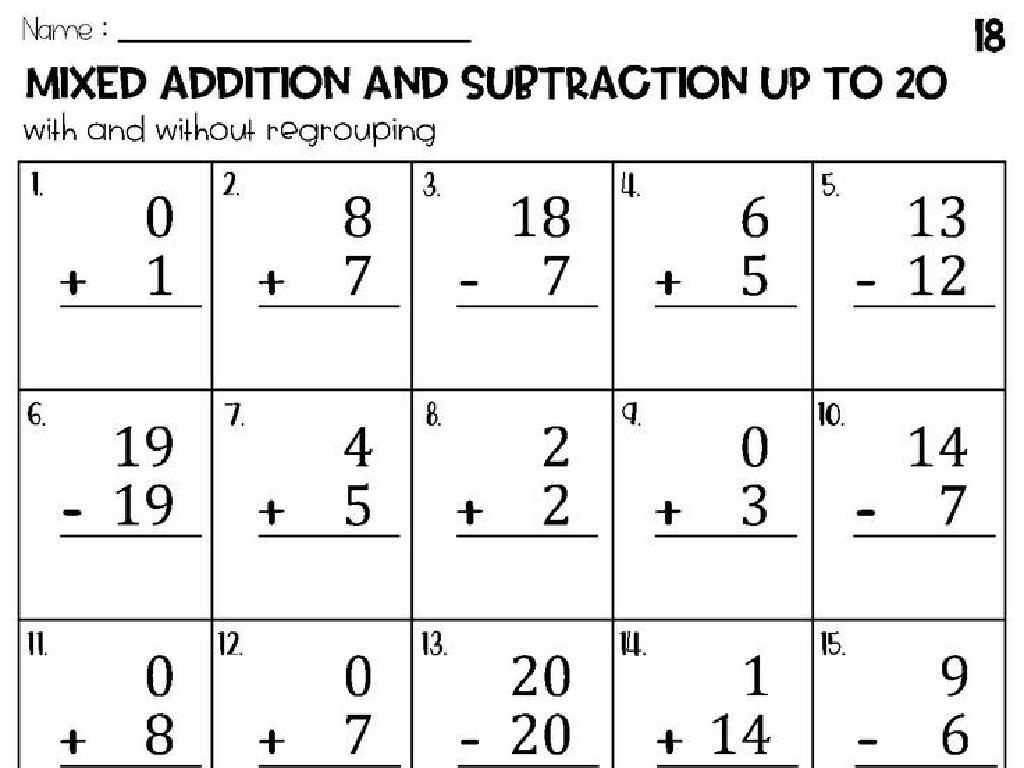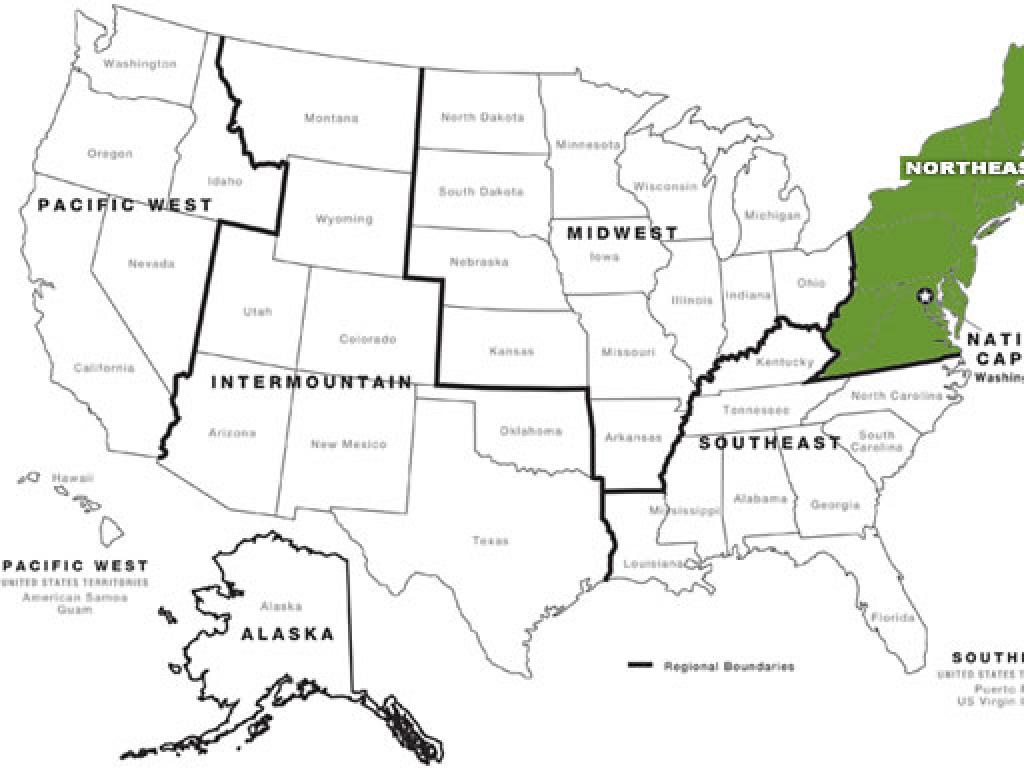Divide Decimals Using Area Models: Complete The Equation
Subject: Math
Grade: Fifth grade
Topic: Divide Decimals
Please LOG IN to download the presentation. Access is available to registered users only.
View More Content
Divide Decimals Using Area Models
– Understanding decimals
– Decimals represent parts of a whole
– Division basics
– Division is splitting into equal parts
– Visualizing with area models
– Area models show division as regions
– Completing division equations
– Use models to solve decimal division
|
This slide introduces the concept of dividing decimals using area models. Begin by ensuring students have a solid understanding of what decimals are and how they represent fractions of a whole. Then, review the basics of division as the process of splitting a number into equal parts. Explain how area models can help visualize this process by breaking a whole into regions that represent the divisor and dividend. Finally, demonstrate how to complete division equations using area models, showing the division of decimals in a visual and tangible way. Encourage students to draw their own area models to solve problems and to ask questions if they’re unsure about the process.
Understanding Decimals
– Decimals represent parts of a whole
– A decimal like 0.5 means half of something
– Imagine dividing a pizza into slices
– If a pizza has 10 slices, each slice is 0.1 of the pizza
– Decimals are related to the number 10
– Our number system is base 10, so decimals use this system
– Each decimal place has a value
– Places after the decimal point: tenths, hundredths, thousandths
|
This slide introduces the concept of decimals to fifth graders by relating it to a familiar and enjoyable experience: dividing a pizza. Decimals are a way of expressing fractions where the denominator is a power of ten. It’s important to explain that each place value after the decimal point represents tenths, hundredths, thousandths, etc. Use visual aids like a pizza cut into 10 slices to illustrate how each slice represents a decimal part of the whole pizza. This will help students visualize and better understand the concept of decimals before moving on to dividing them using area models.
Dividing Decimals with Area Models
– Recap: What are area models?
– Area models represent numbers as parts of a rectangle.
– Area models for division
– Break the dividend into sections within the model.
– Visual division with boxes
– Use boxes to represent each part of the division.
– Coloring to differentiate parts
– Use colors to show different decimal places.
|
Begin with a quick review of area models, emphasizing their use in multiplication as a foundation for their application in division. Explain that just like multiplication, division can be visualized using area models by breaking the dividend into smaller, more manageable parts. Demonstrate how to draw boxes to represent each part of the division process, and use different colors to help students distinguish between whole numbers and decimal parts. This visual method can make the concept of dividing decimals more concrete and understandable. Encourage students to practice by creating their own area models with different division problems.
Dividing Decimals with Area Models
– Division as equal sharing
– Example with cookies
– If 10 cookies are shared among 5 friends, each gets 2 cookies.
– Using division to solve problems
– Division tells us how to distribute items evenly.
– Area models for decimals
– Visualize dividing a shape into equal parts to represent decimals.
|
This slide introduces the concept of division as a method of sharing equally among a number of recipients. Use the example of dividing 10 cookies among 5 friends to make the concept relatable and easy to understand for fifth graders. Explain that division is the math operation that helps us find out how many items each person gets when we share equally. Introduce area models as a visual tool to help students understand division with decimals. Area models can represent the division of a whole into equal parts, which is particularly useful when working with decimal numbers. Encourage students to think of division as a fair way to distribute items and to visualize this process using shapes and areas.
Dividing Decimals with Area Models
– Divide a number by a decimal
– Draw an area model for visualization
– Area models break the number into parts
– Example: 3.6 ÷ 0.4
– We’ll use 3.6 and 0.4 to create an area model
– Step-by-step area model drawing
– Follow along as we draw the model step by step
|
This slide introduces the concept of dividing decimals using area models, which is a visual method to help students understand division with decimals. Start by explaining that an area model represents the dividend and divisor as lengths on a grid, which we then use to find the quotient. Use the example 3.6 ÷ 0.4 to demonstrate how to set up the model. Draw a rectangle, label the sides with the dividend and divisor, and partition the rectangle into sections that represent the divisor. This will help students visualize how many times the divisor fits into the dividend. Encourage students to draw along with you, step by step, and ensure they understand each part of the process. After completing the area model, discuss how it shows the quotient and how this method can be applied to other decimal division problems.
Dividing Decimals with Area Models
– Draw a labeled rectangle
– Rectangle sides represent dividend and divisor
– Break into smaller sections
– Each part represents a portion of the dividend
– Add sections to match dividend
– Stop when the parts equal the whole dividend
– Complete the division equation
– Use the model to find the quotient
|
This slide introduces the concept of using area models to divide decimals, which is a visual method that helps students understand division in a concrete way. Start by drawing a large rectangle, labeling the length with the divisor and the width with the dividend. Then, break the rectangle into smaller, equal parts that represent a fraction of the dividend. Continue adding these parts until the total area of the parts matches the dividend. This process helps students visualize how many times the divisor fits into the dividend. The final step is to use the area model to write and solve the division equation, finding the quotient. Encourage students to practice with different dividends and divisors to become comfortable with the concept.
Completing the Equation with Area Models
– Build your own area model
– Use the model to determine the quotient
– Divide the area into sections representing the divisor
– Quotient: times divisor fits into dividend
– If we have 3.6 ÷ 1.2, how many times does 1.2 fit into 3.6?
– Practice with different dividends and divisors
– Try 4.8 ÷ 1.6 or 7.5 ÷ 2.5 for more practice
|
This slide is an interactive activity for students to apply their understanding of dividing decimals using area models. Students should create their own area models on graph paper, using the models to visually represent the division problem. Remind them that the quotient is the number of times the divisor can be ‘fit’ into the dividend. This hands-on approach helps solidify the concept of division as making equal groups. Provide several examples with different dividends and divisors for students to practice. Encourage them to explain their reasoning and how they used the area model to find the quotient. This will help them grasp the concept of division with decimals more concretely.
Practice Time: Dividing Decimals with Area Models
– Solve 4.8 ÷ 0.6 using an area model
– What is the area if one side is 4.8 and the other side is 0.6?
– Solve 2.75 ÷ 0.5 using an area model
– If one side of the area model is 2.75, what’s the length of the other side if the area is 0.5?
|
This slide is for a hands-on practice session where students will apply their understanding of dividing decimals using area models. Start by demonstrating how to set up an area model for 4.8 ÷ 0.6, emphasizing the importance of aligning decimal points and understanding the concept of ‘area’ in this context. Then, guide students through the process of solving 2.75 ÷ 0.5. Encourage students to visualize the division as finding the missing dimension of a rectangle when the area and one side length are known. Provide additional examples if time permits and ensure that students are comfortable with the process before moving on to independent practice.
Class Activity: Area Models for Decimal Division
– Pair up and create an area model
– Choose unique dividends and divisors
– Solve your division problem
– Use your area model to find the quotient
– Present model and solution to class
– Explain your thinking and steps taken
|
This activity is designed to encourage collaboration and creativity among students while they practice dividing decimals using area models. Instruct students to pair up and select their own numbers for the division problem, ensuring they are comfortable with decimal numbers. They should then draw an area model to represent their problem and work together to find the solution. Once they have completed their model and found the quotient, each pair will present their work to the class, explaining the process they used. For the teacher: Prepare to offer guidance on creating area models and ensure that each pair chooses appropriate difficulty levels for their problems. Have materials ready for drawing models. Possible variations for different pairs could include using different decimal places or incorporating real-life contexts into their problems.
Conclusion & Homework: Mastering Decimal Division
– Well done on decimal division!
– Homework: Finish the worksheet
– Worksheet includes various problems
– Practice problems to reinforce learning
– Use area models to solve the equations
– Keep practicing for perfection!
|
Congratulations to the students for their hard work during the lesson on dividing decimals using area models. The homework assignment is to complete a worksheet that provides additional practice problems to help reinforce what they’ve learned in class. Remind students that consistent practice is key to mastering any mathematical concept. The worksheet includes a variety of problems to ensure students can apply the concept of area models to different types of decimal division scenarios. Encourage them to attempt every problem and remind them that making mistakes is a part of the learning process. In the next class, we will review the homework answers and clarify any doubts.





